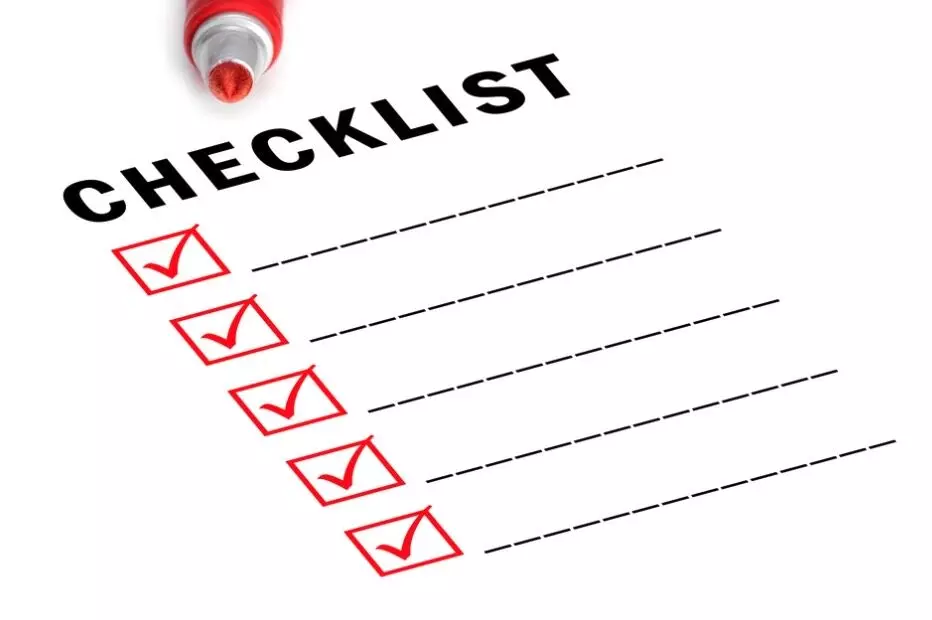World Checklist Day: The science of why ticking task boxes calms the mind, boosts productivity
Over time, the repetitive act of planning and completing tasks builds neural pathways that strengthen focus and executive control
By Anoushka Caroline Williams
Hyderabad: Every year on October 30, the world marks Checklist Day, a celebration of one of humanity’s simplest yet most enduring productivity tools.
What began as a practical safety measure in aviation has evolved into a universal symbol of order and achievement. Today, the humble checklist is as common in cockpit dashboards as it is in digital planners and sticky notes.
How do checklists help with tasks?
But behind that small act of ticking a box lies a powerful biological reaction. Each time you mark a task as done, your brain releases a brief surge of dopamine, the neurotransmitter linked to pleasure and motivation.
“A completed task signals achievement, no matter how small. That sense of completion triggers dopamine release, which reinforces the habit of seeking more accomplishments,” explains Dr Leela Kumar, a neuropsychologist speaking to NewsMeter.
Checklists tap into the brain’s reward circuitry, the same system that responds to food, music, and social recognition. Each tick creates a self-reinforcing cycle: do → complete → feel good → do more.
The Zeigarnik Effect and mental clarity
The ‘Dopamine of Done’ is not the only reason humans rely on checklists. Psychologists also point to the Zeigarnik Effect, named after Soviet psychologist Bluma Zeigarnik, who discovered that unfinished tasks occupy mental space, while completed ones bring cognitive relief.
“Our brain keeps looping over uncompleted tasks until we give them a clear endpoint,” says Dr Shreya Mathew, cognitive behaviour therapist. “Writing them down and later crossing them off gives the mind permission to disengage.”
In other words, checklists are not just tools for planning; they are mechanisms for freeing up mental bandwidth.
How lists train the brain
Over time, the repetitive act of planning and completing tasks builds neural pathways that strengthen focus and executive control.
“When we repeatedly set goals and achieve them, we build neural confidence,” says Dr Ritesh Bhattacharya, behavioural neuroscientist. “The checklist becomes a training tool for executive function, our brain’s planning and prioritisation ability.”
By breaking large goals into smaller steps, checklists allow the brain to experience progress more frequently, making big projects feel less daunting. This ‘micro-achievement model’ sustains motivation even in long-term work.
Digital vs. paper checklists
Despite the rise of apps and productivity dashboards, paper checklists continue to hold psychological value. The physical act of striking off a task activates sensory cues that reinforce satisfaction.
“There is a physical satisfaction in movement, the pen stroke, the paper texture, it turns achievement into something you can see and feel,” notes Dr Ananya Rao, occupational psychologist and consultant at a multinational tech firm.
Digital checklists, however, benefit users who need reminders, analytics or collaborative tracking. Experts agree that both formats serve different cognitive styles; paper appeals to sensory reinforcement, while digital tools appeal to data-driven organisation.
When the list becomes the goal
While dopamine-driven satisfaction boosts motivation, overuse can lead to dependency on the “tick.” People may begin adding trivial tasks just to experience the feeling of completion.
“We see professionals building longer lists just to experience accomplishment, even if some tasks are insignificant,” warns Dr Mathew. “That’s when productivity turns performative.”
Unchecked, this habit can lead to burnout or guilt over incomplete lists. Psychologists recommend limiting daily lists to three to five key goals and aligning them with purpose rather than volume.
Redefining productivity
Modern productivity experts advocate the intentional checklist, one that focuses on outcomes, not just actions. By ranking tasks as urgent, important, and optional, people can maintain the dopamine reward loop without overwhelming themselves.
“Your brain values closure, not clutter,” says Dr Bhattacharya. “A good checklist is not a dumping ground. It’s a prioritisation tool.”
This approach turns the checklist from a stress mechanism into a framework for focus, mental clarity, and accountability.
The bottom line
On this World Checklist Day, it’s worth remembering that the joy of ticking a box is more than habit; it’s biology. Each checkmark provides closure, order and a measurable sense of progress in an unpredictable world.
As Dr Rao summarises, “A checklist is not about doing everything. It’s about reminding your brain that you are in control, one box at a time.”